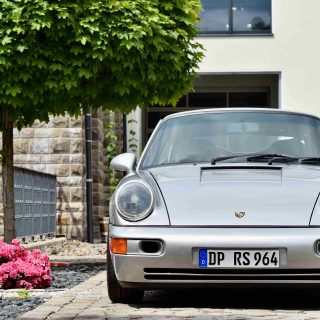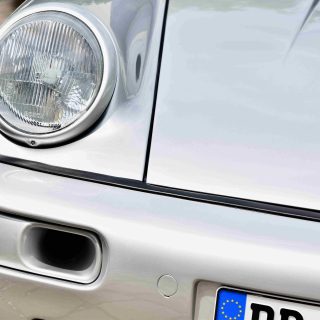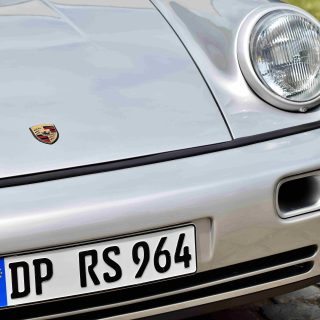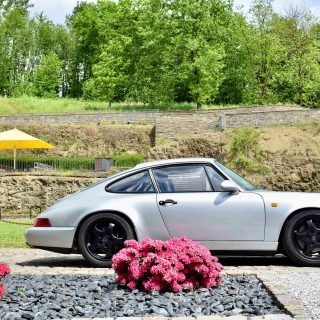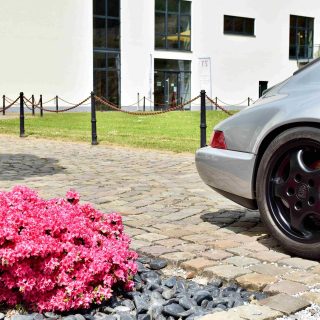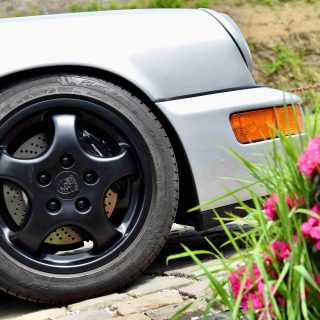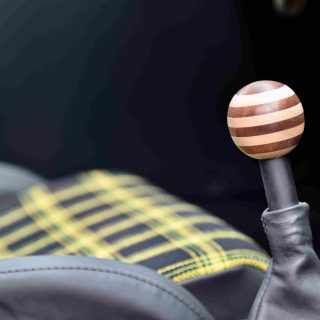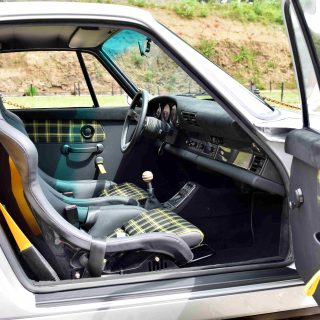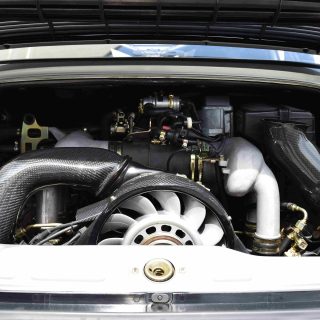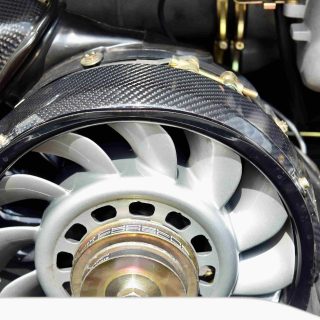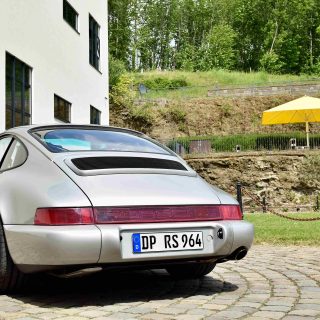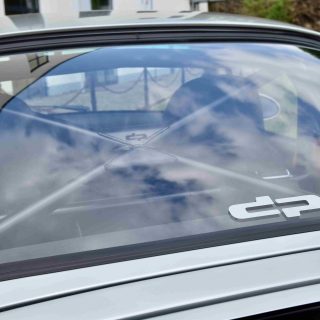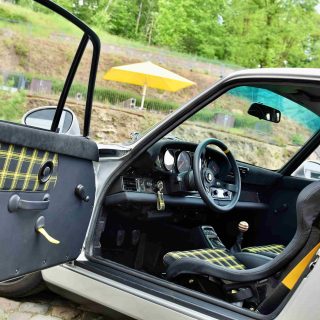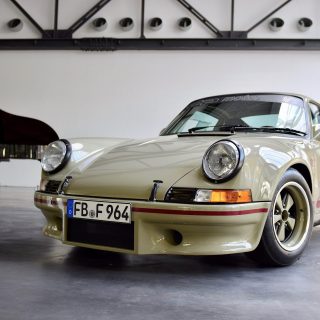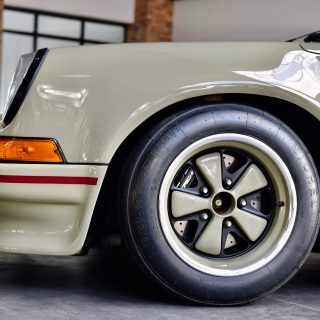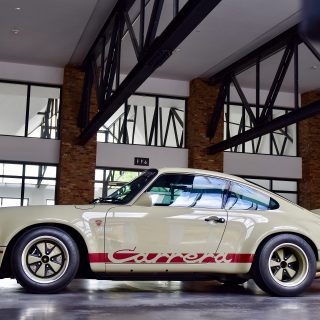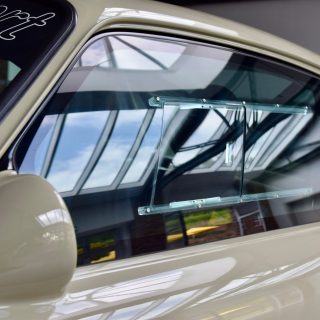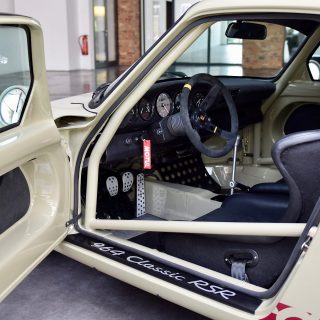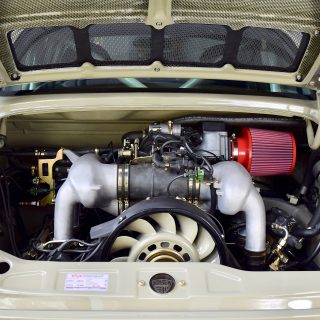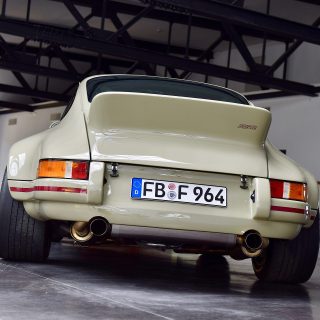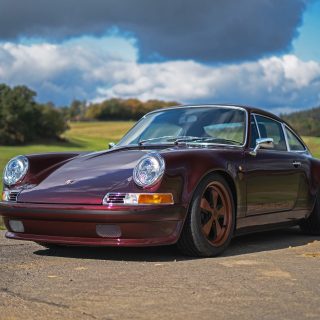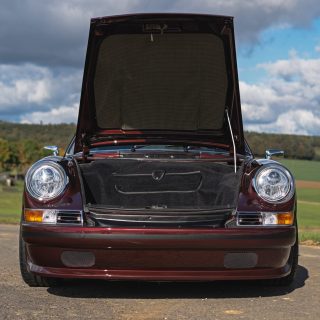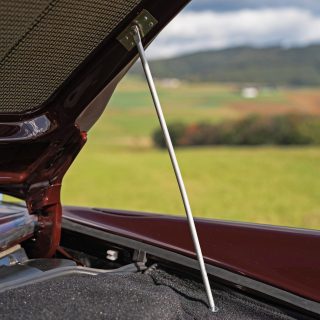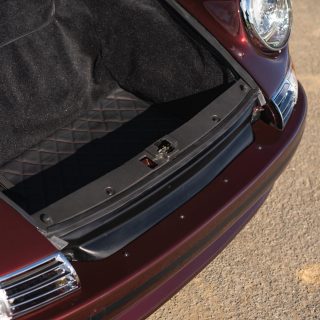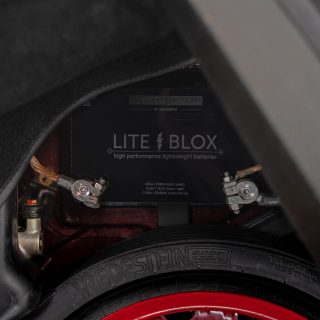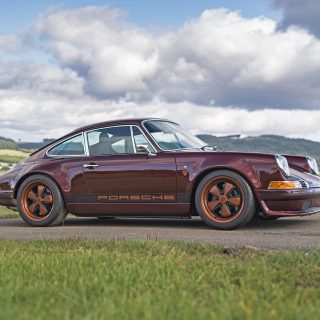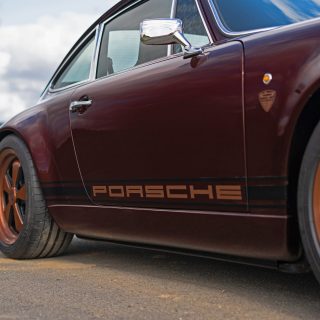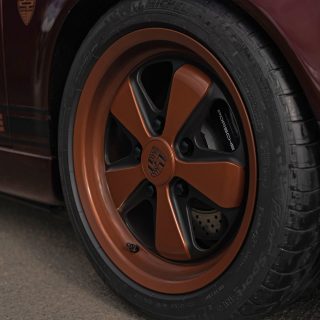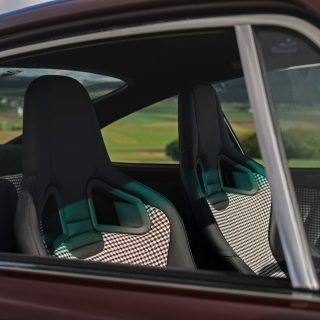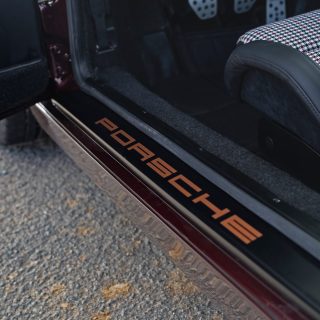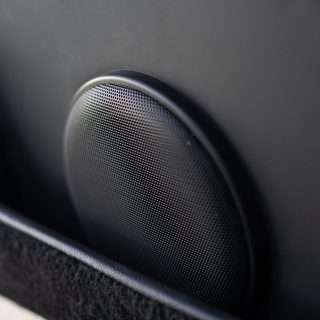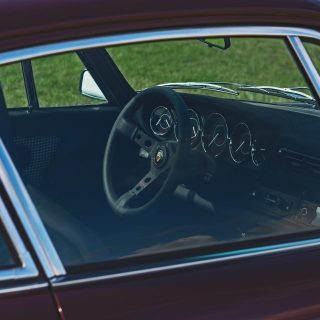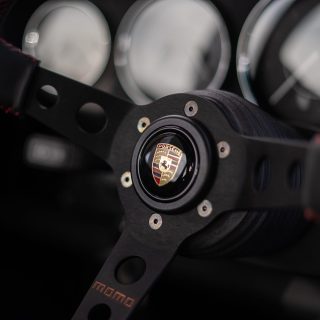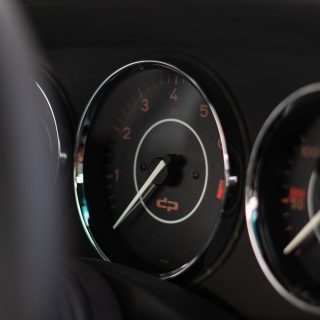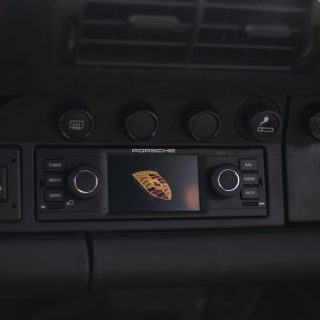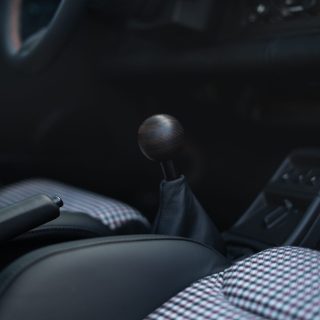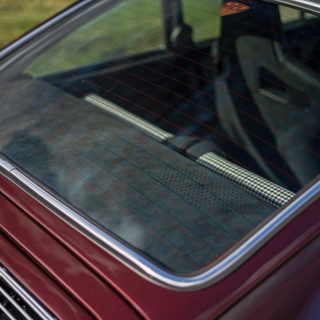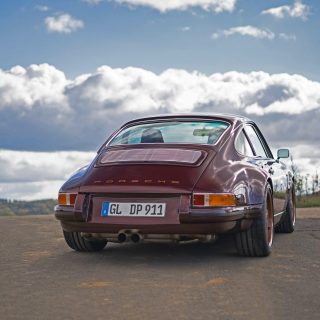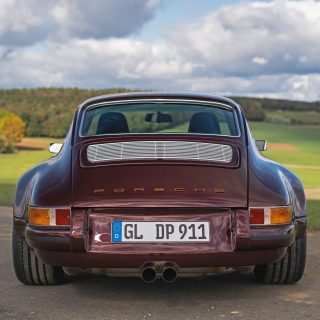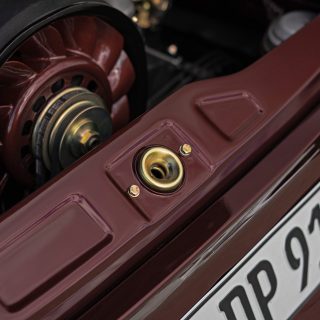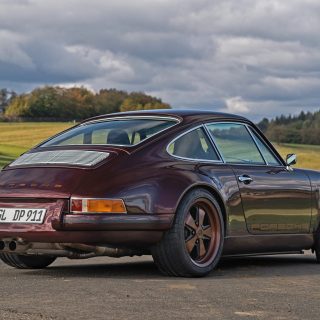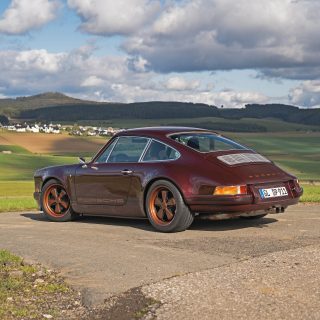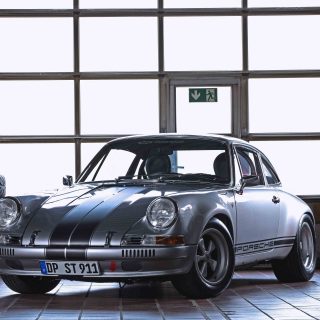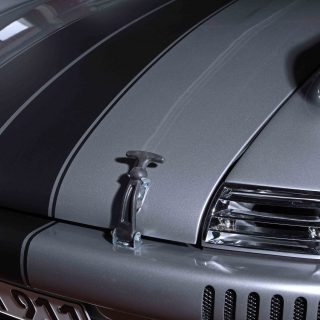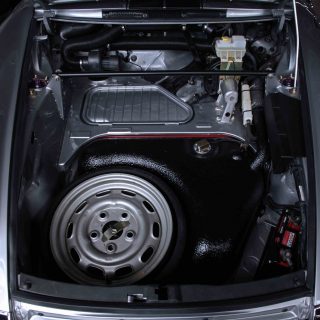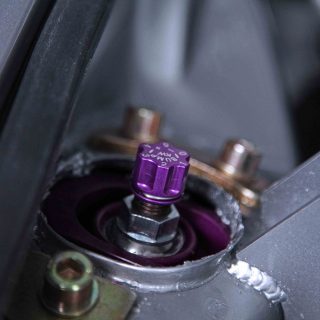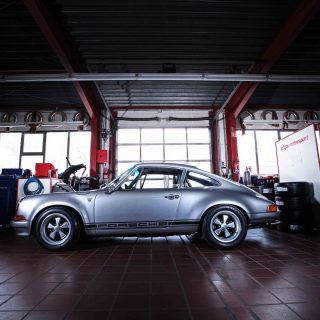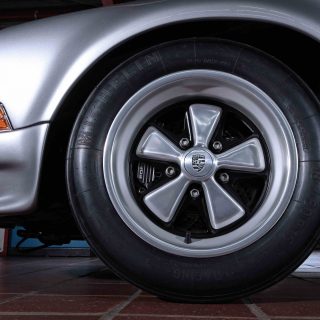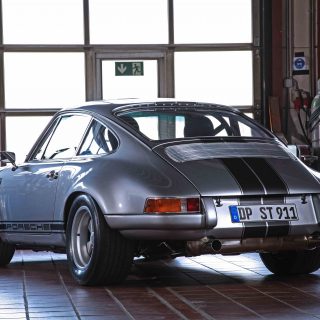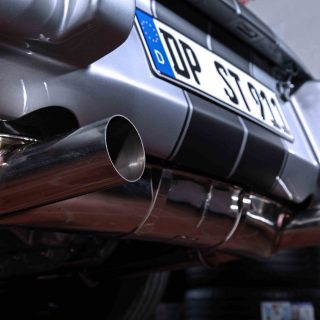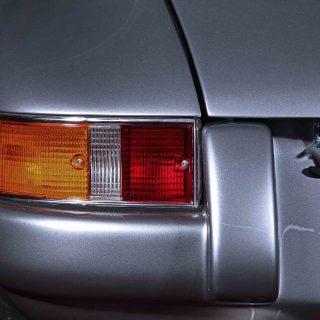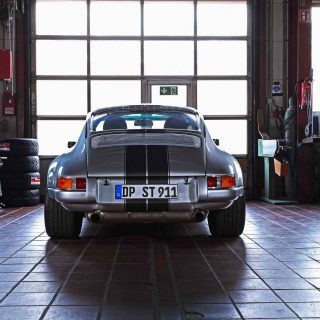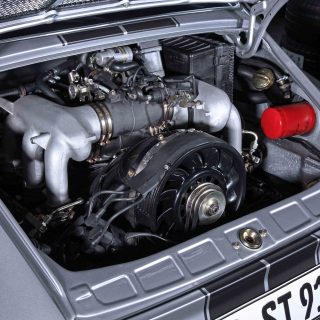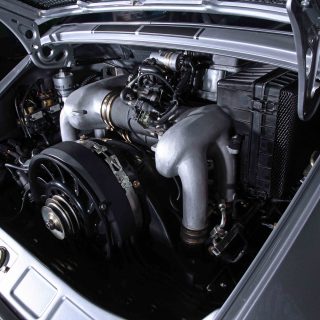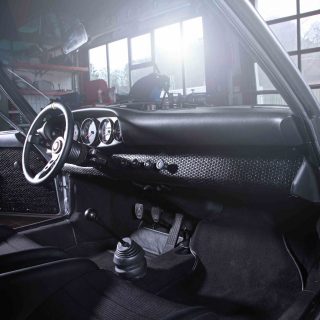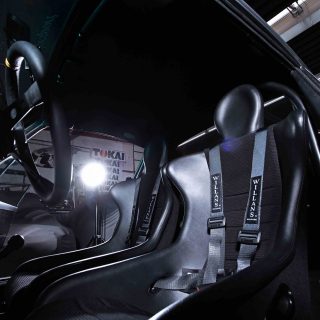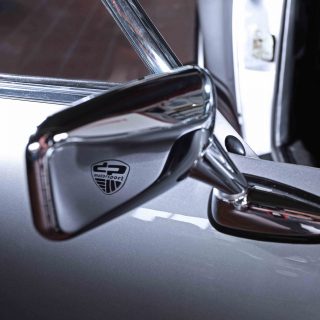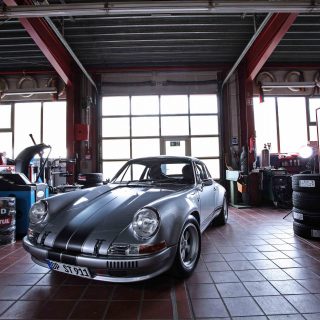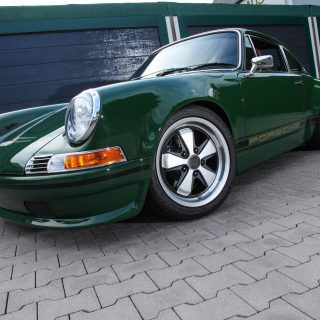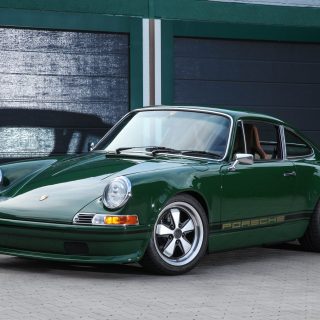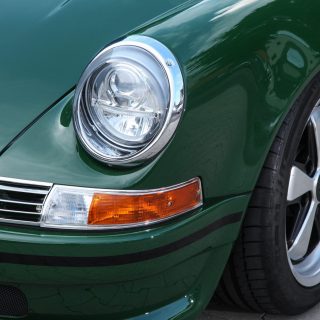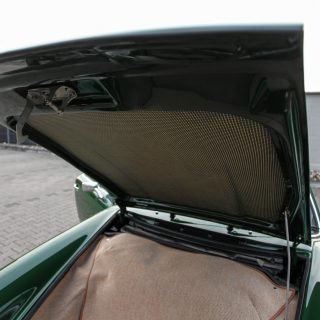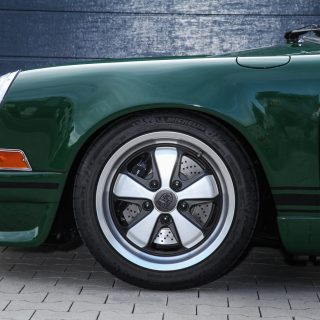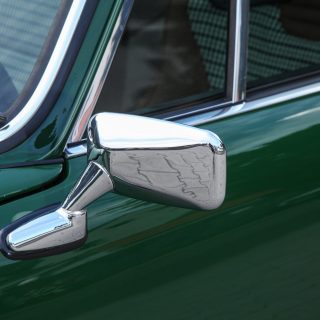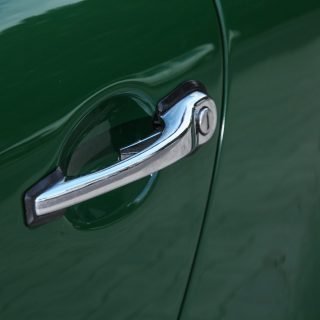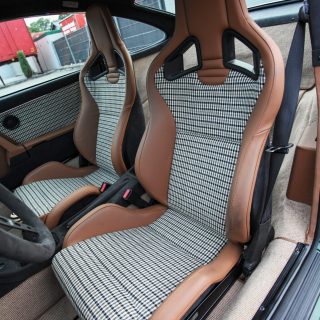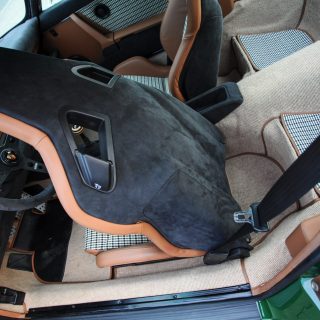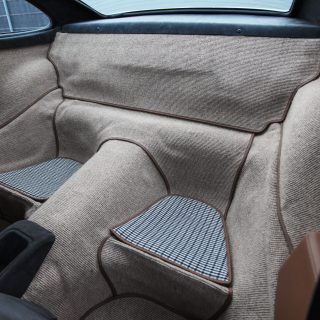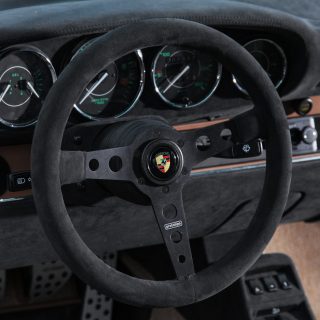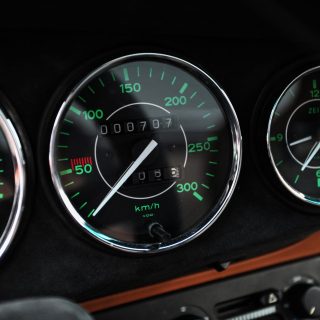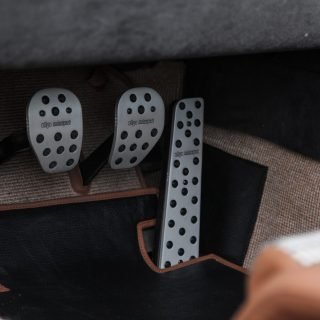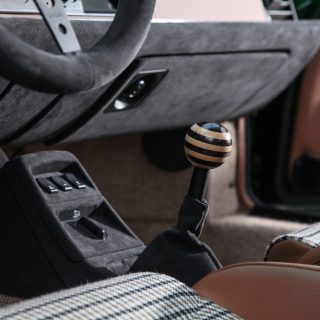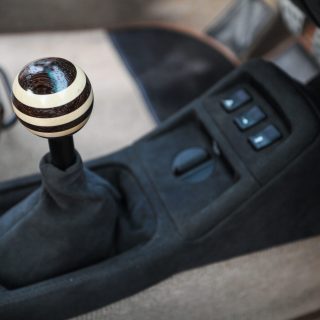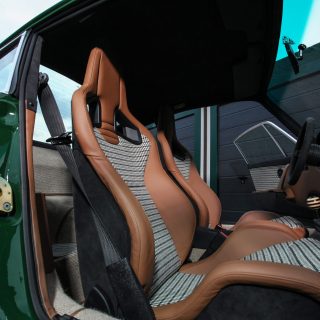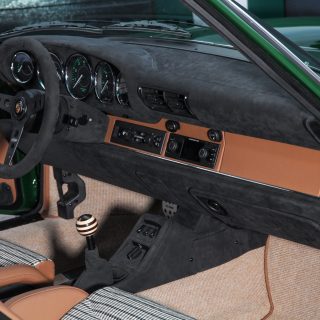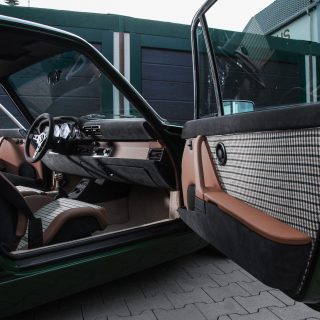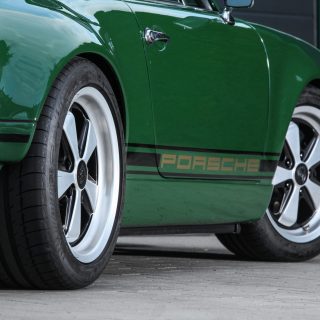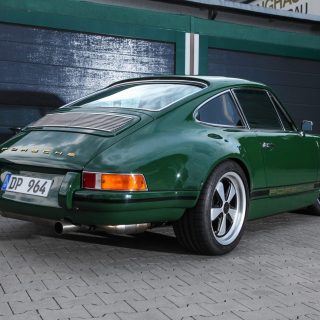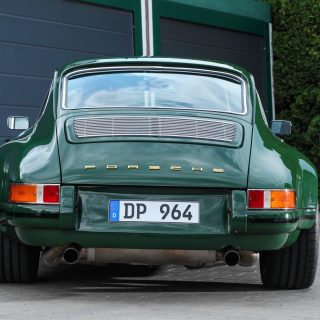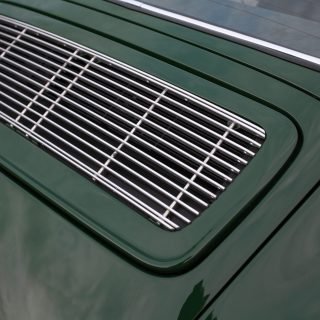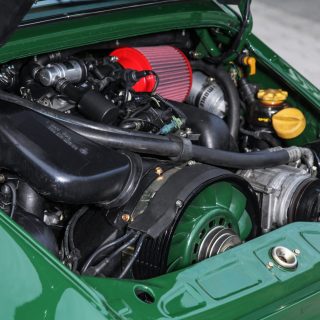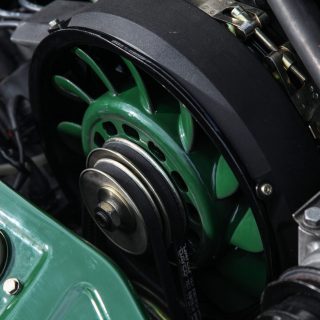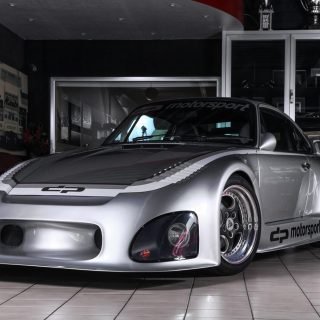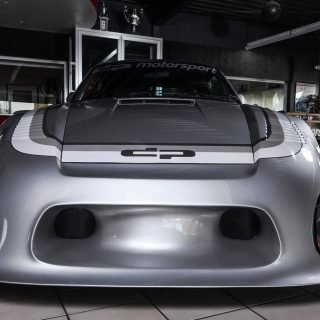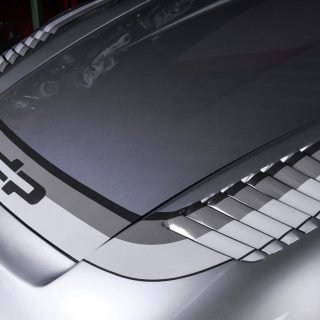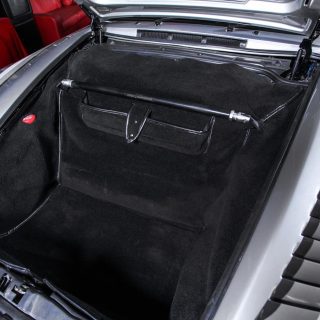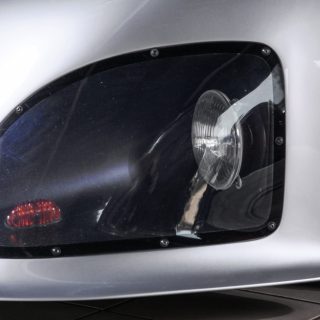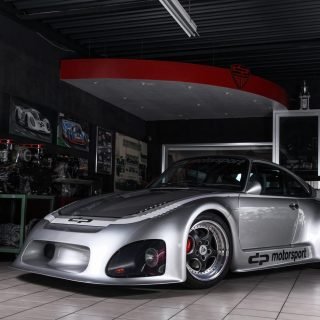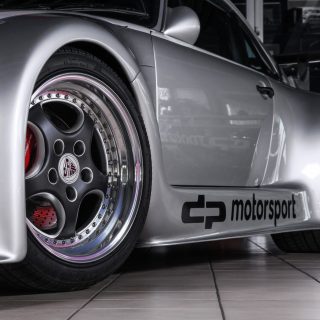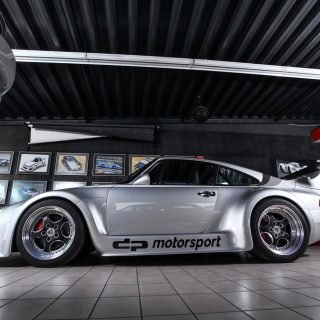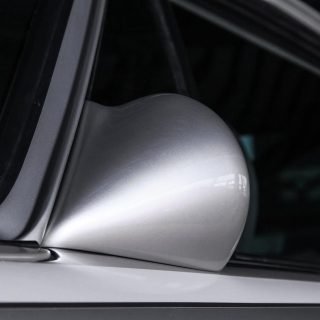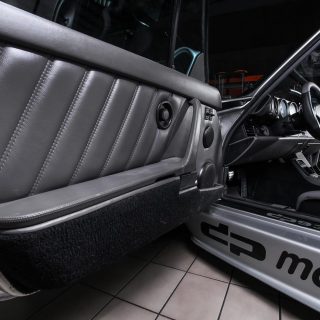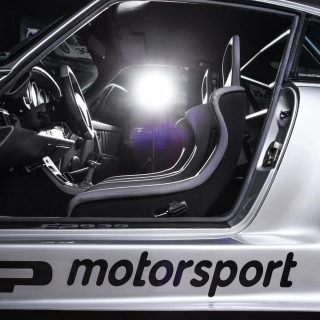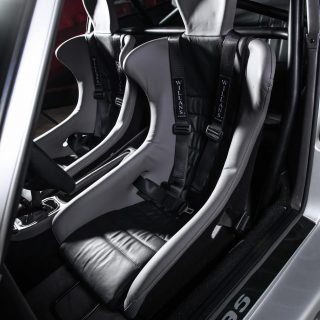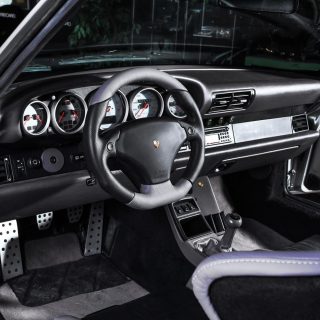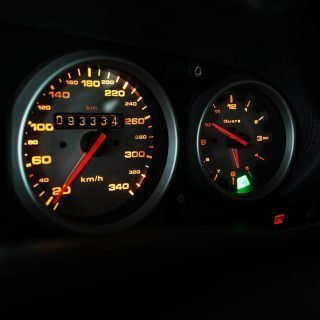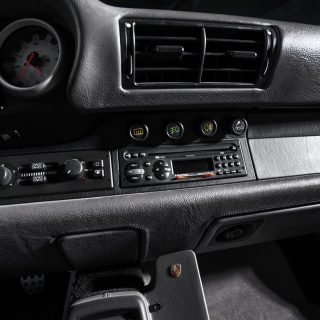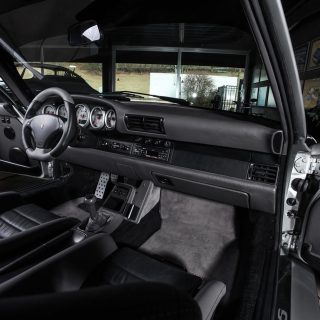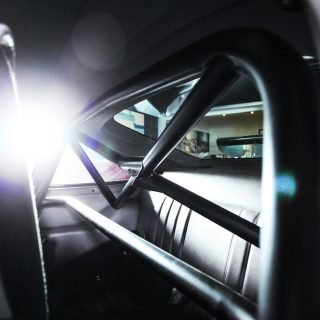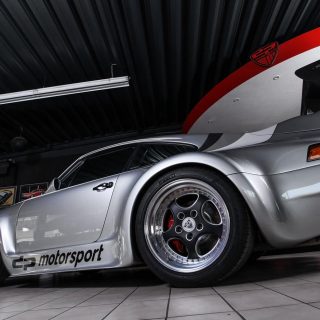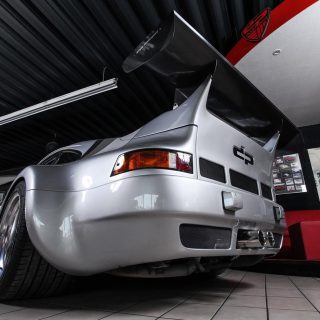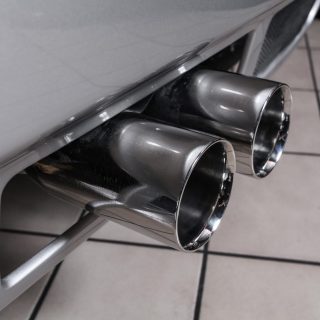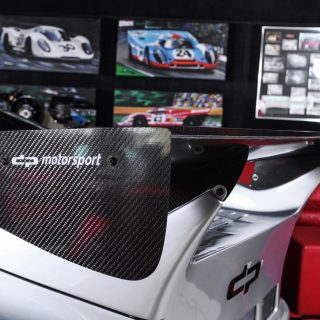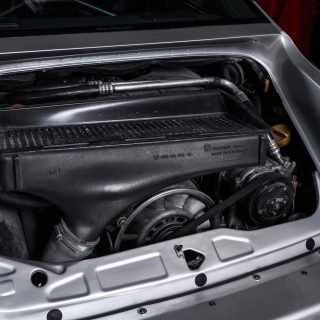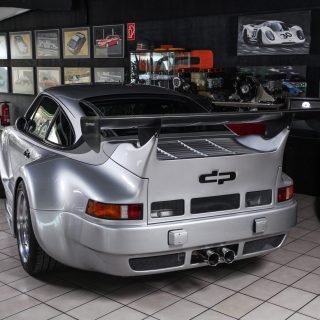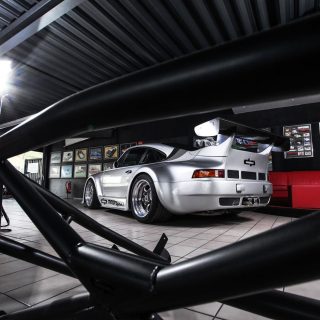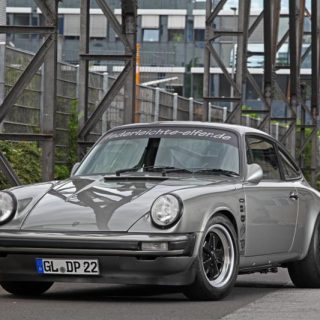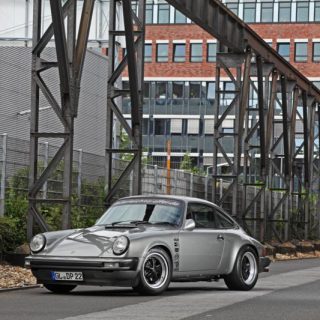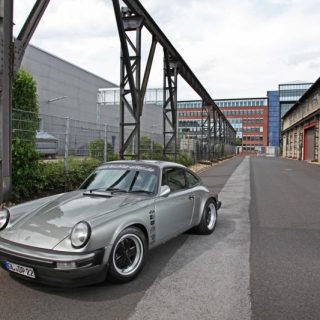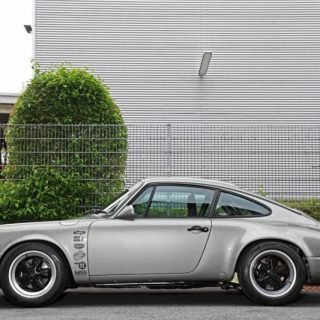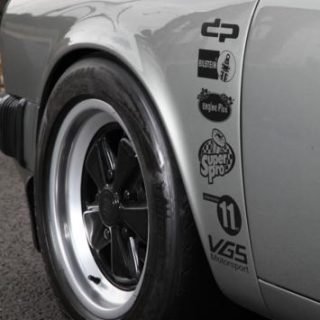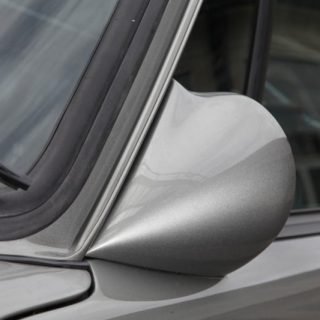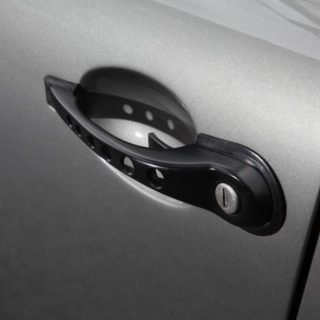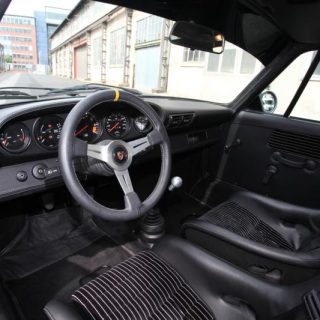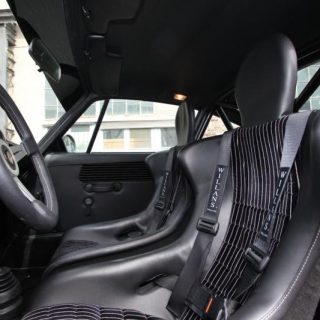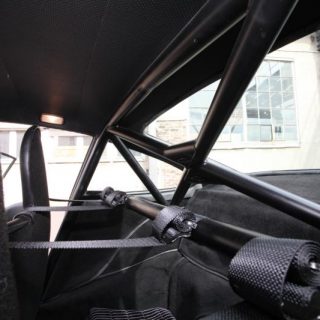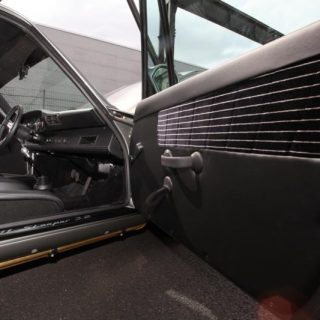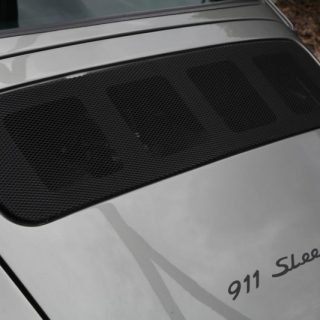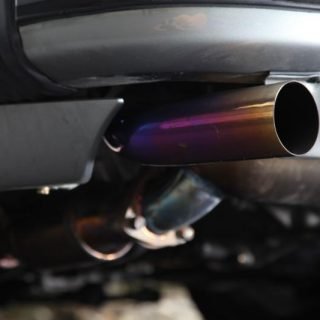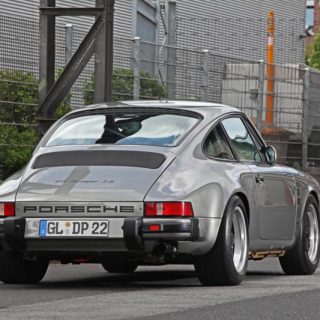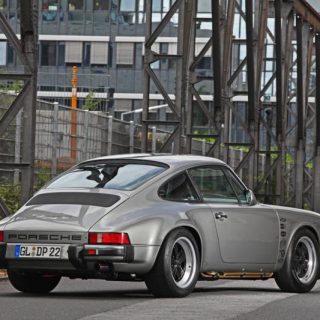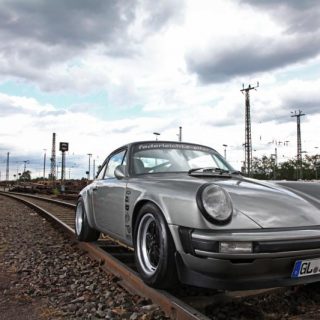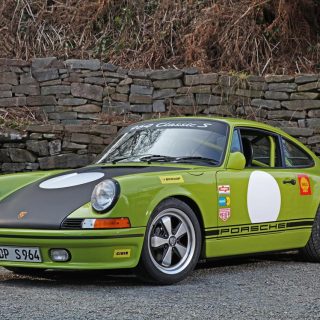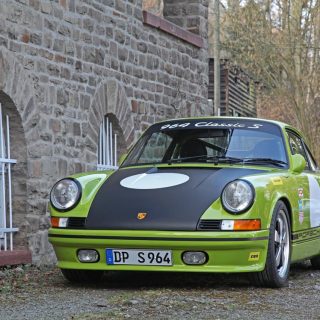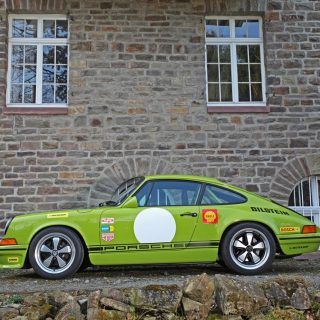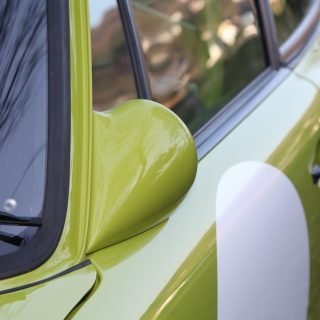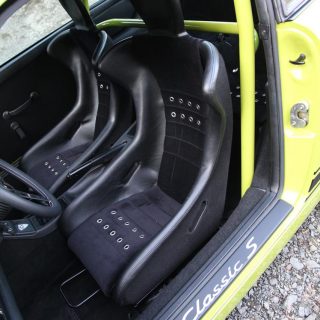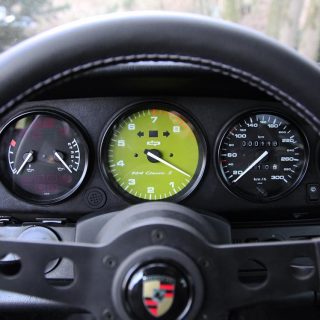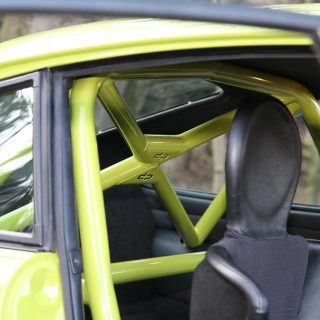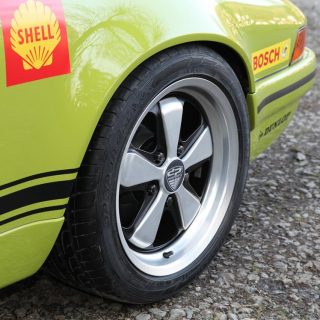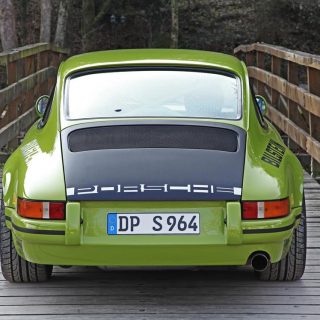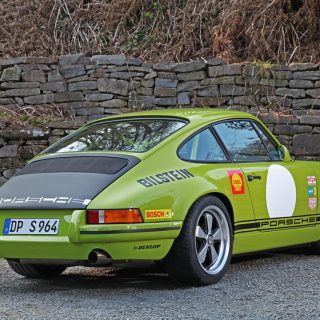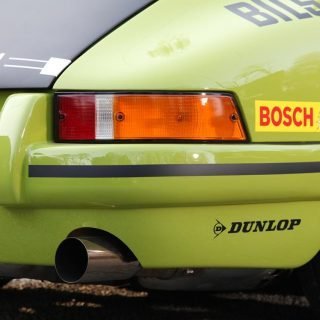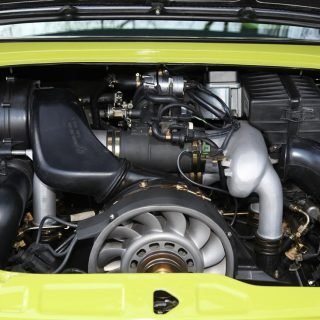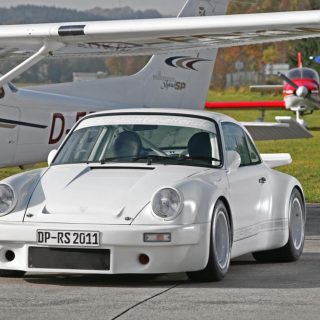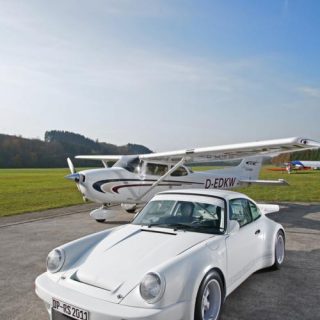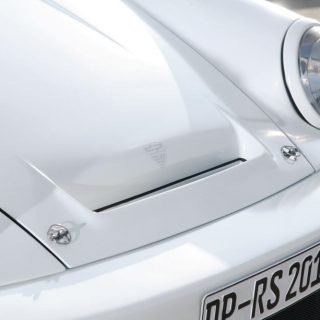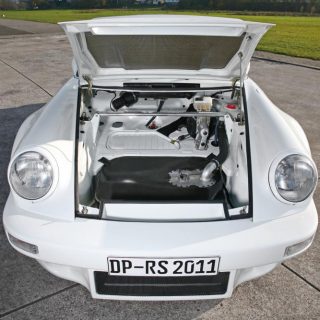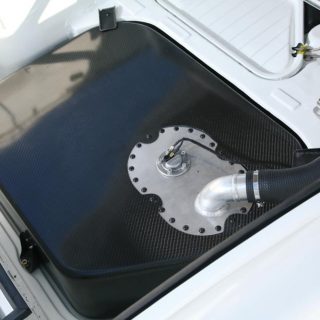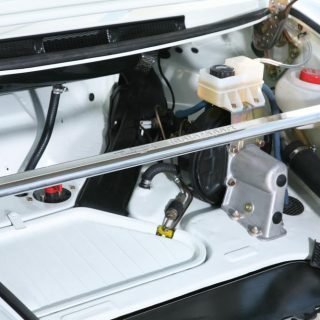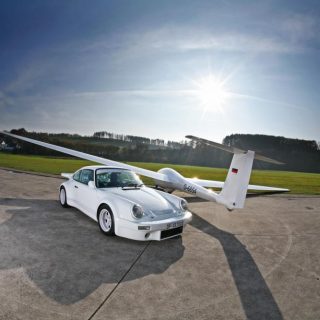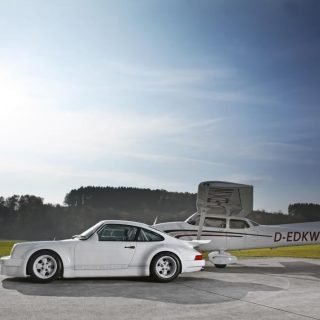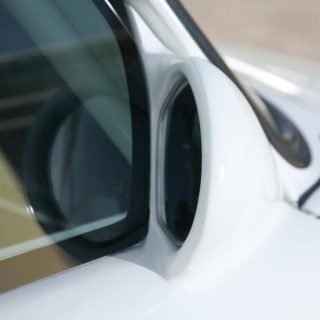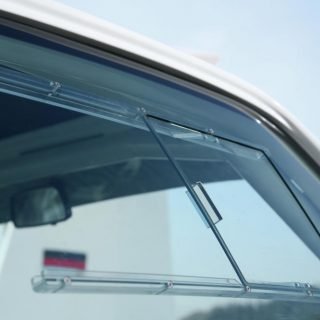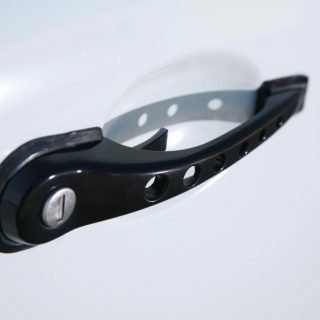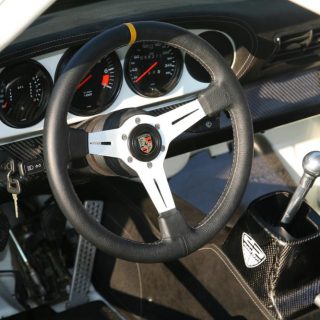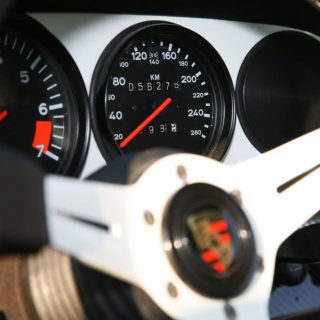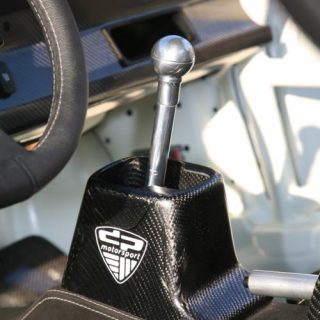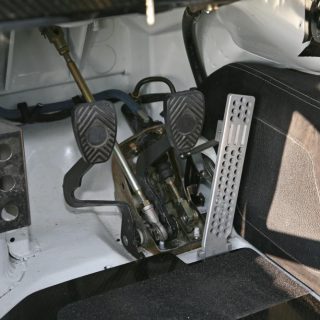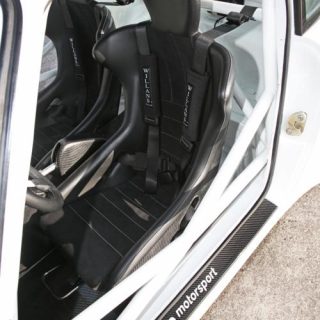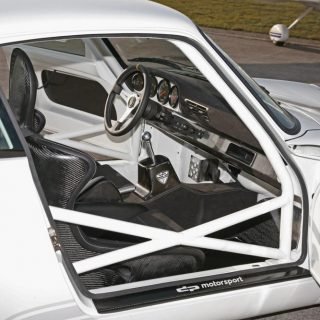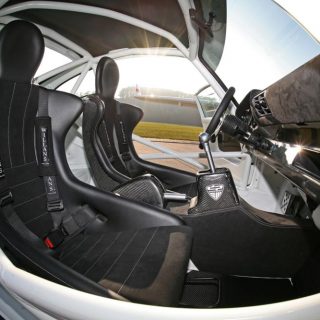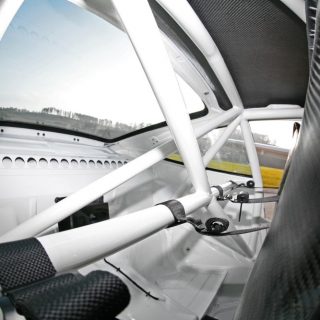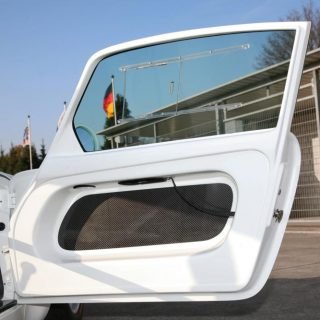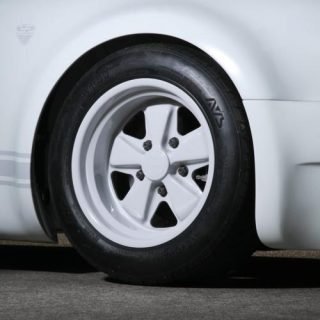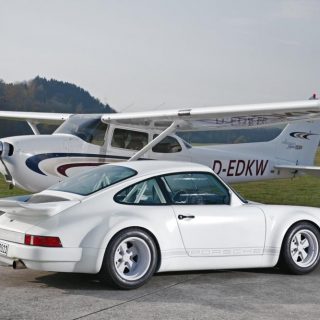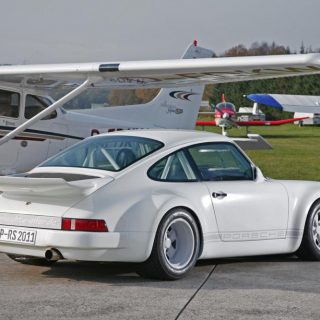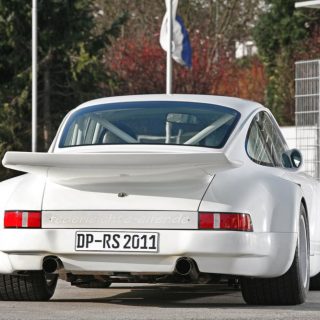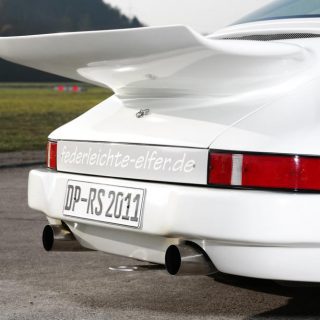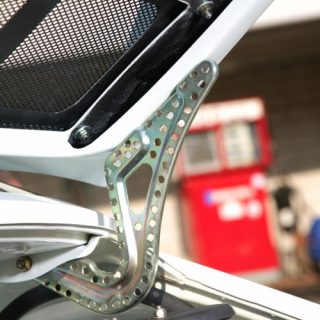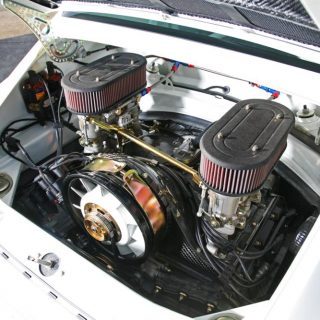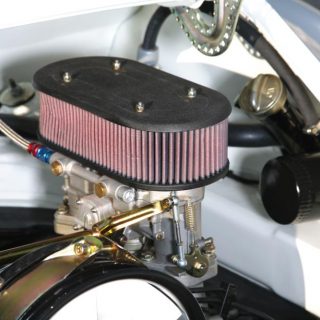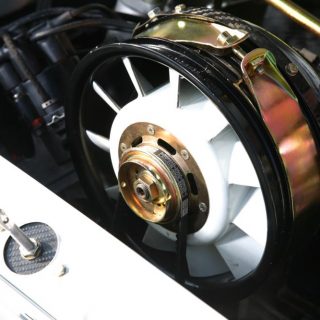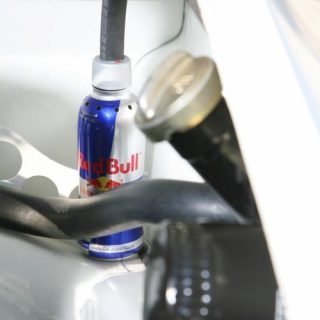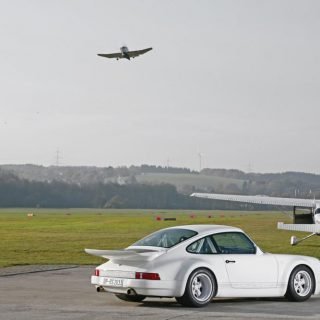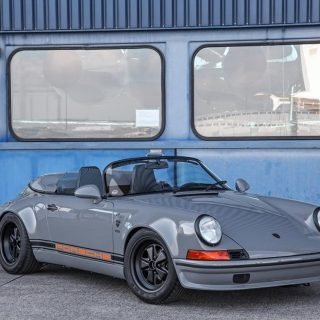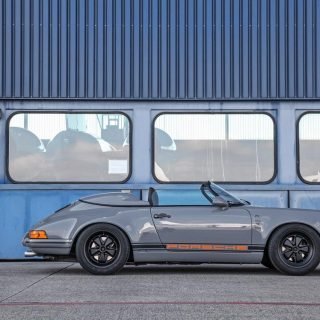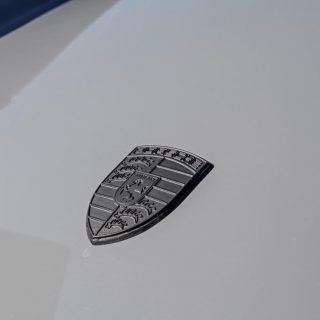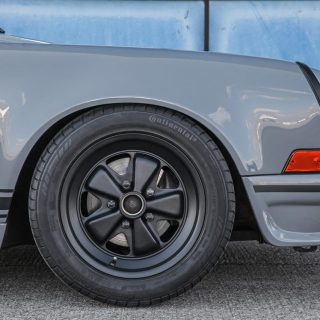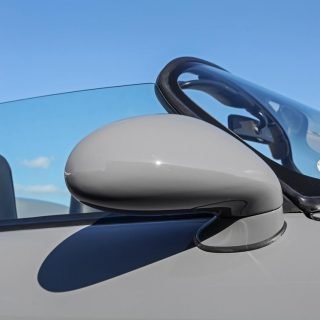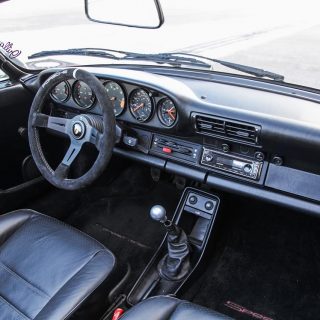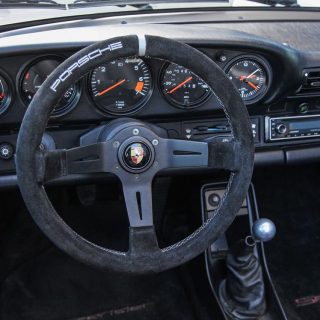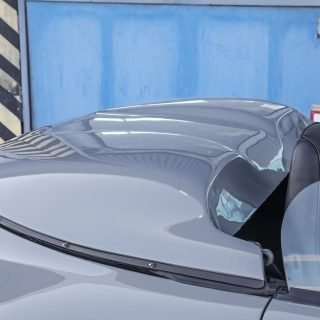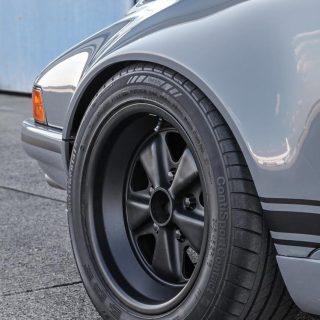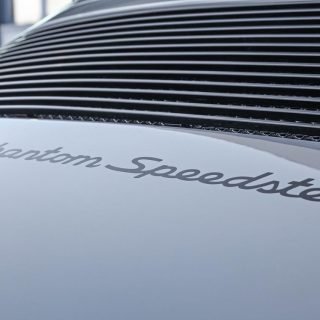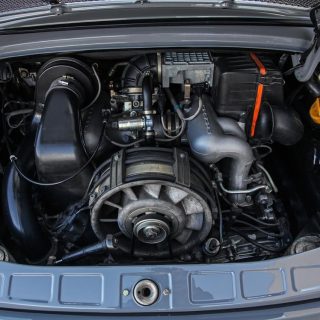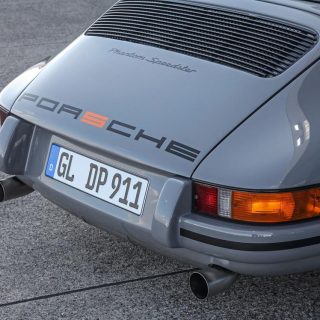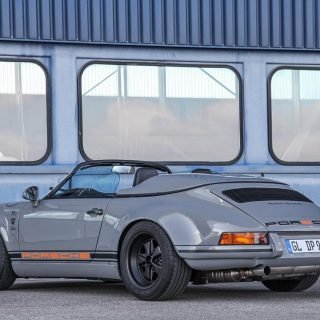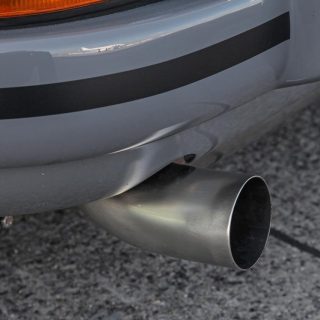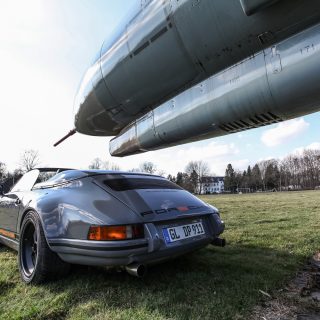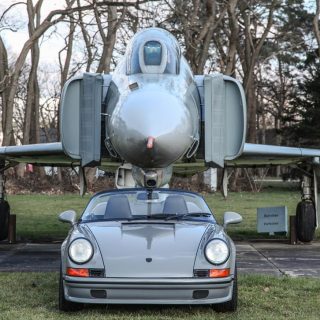The Brazilian Ride
1990 Porsche 911 (Type 964) Carrera 2 Coupé, refreshtoration by dp Motorsports in the look of the Carrera RS
The Brazilian Ride
Brazilian customer, original Swabian basic concept, Rhenish implementation: this 1990 Porsche 911 (type 964) Carrera 2 Coupé with bonds from the RS deserves the title “remarkably multinational”.
Patrick Zimmermann and his sports car connoisseurs from dp Motorsports staged it as part of a “refreshment”. This combined terminology usually conceals the partial restoration of not quite comprehensive dimensions. The result deviates from the now historical model of 1992 in various details. But it is precisely this subtle difference that is intended, as it conveys a beneficial degree of individuality. This is also in demand in Brazil, and not only that: the air conditioning system played a role that should not be underestimated, which is actually only logical. Not in this case, because the classic refrigeration compressor in the engine chamber was overlooked when the base vehicle was purchased in northern Germany. It was missing, and for a (not that) good reason: it was an online purchase without a prior visit on site…
The headlines:
Refined: Quotations from the famous Carrera RS in 1992 upgrade the C2 Coupé delivered in 1990.
Delivered later: Dynamics thanks to original magnesium wheels, just like the original three decades ago.
Retrofitted: electrically operated air conditioning creates a sense of well-being in the Brazilian ambient air.
Overath-Immekeppel, Germany. The latest vehicle construction project by the nine-eleven specialists from dp Motorsports is in many ways a wanderer between two worlds. On the one hand, it is a reference to a special series produced more than 30 years ago in Stuttgart-Zuffenhausen, but in the details deviations from the original – individualisations – must be appreciated. In addition, the partial restoration of the Carrera 2 Coupé built in 1990 was carried out on behalf of a new Brazilian customer. After initial online research, this was sent to the traditional Rhineland company by email. He didn’t own a basic vehicle, so his ideas were all the more specific. He wanted to embark on a special tour of Germany: the Porsche Museum, the Nürburgring, and finally a home visit to Alois Ruf. The befitting means of transport should be a clone of the 964 generation Carrera 2 introduced in 1992. In the internet-based search for a good used vehicle, dp Motorsports was to provide advisory support as the later executing company. Finally, a silver copy was found in northern Germany, purchased and picked up by a dp employee. Equipped with a clipboard as a precaution, he sat on a passenger train and wanted to write down first impressions of the transfer journey on the way back. This could have shortened the further procedure. The most important finding: The C2 bought online did not have air conditioning – not the best prerequisite for later export to South America.
Patrick Zimmermann was certain that the classic air conditioning compressor in the engine compartment could only be retrofitted at considerable expense. An electrical system of english origin was the economically more sensible solution, especially since the towing power at the expense of the engine would be eliminated with an aftermarket variant. In addition to eliminating the corresponding belt drive, part of the weight concentration would also move forward towards the front axle. The other measures: more of a refreshtoration – a work-up in defined areas – rather than a frame-off restoration. An original aluminum front hood from the Porsche spare parts program, a carbon trunk lid, the RS rear apron and clear, transparent lightweight glass – apart from the windscreen: These are the styling details on the exterior, which were allowed to retain the factory exterior color silver. The Carrera 2 (although it was retrofitted after the photo shoot) gets a large part of its charm from its original magnesium wheels in traditional 17-inch dimensions. This means that the Carrera 2 comes with two sets of wheels, the older one, including the somewhat dated original tires, was part of the machine when it was purchased. “Magnesium wheels still exist,” reports Patrick Zimmermann, “even if the first shot today doesn’t necessarily hit the mark.” What does he mean by that? “Well,” explains the experienced practitioner, “of course we know that magnesium wheels that are more than 30 years old have to be checked and professionally refurbished. Above all, they should be sealed to preserve their basic substance. But one is surprised when old stocks are delivered for overhaul that are actually not suitable for this – improper maintenance or some weather influences lead to magnesium corrosion, especially on the back, on the flat contact surface of the wheel hub. A lot eats away, you often look at open, large-pored material – and you can’t put a spatula on it again and again. That was also the crux of the matter, why we looked at the selection quite critically”.
Only the second – or was it the third? – a set of used original magnesium wheels had the potential to be used for more sporty projects in the future. The tyres: new Michelin semisicks of the state-of-the-art “PilotSport Cup” specification, which meet the dynamic demands of the one-piece suit. Of course, the overall appearance also includes a sports suspension with visible lowering. KW delivers it, in a clubsports tuning manner: a visual supplement to the appearance inspired by the Carrera RS. The interior has largely adapted to the outside conditions: Recaro “Pole Position” bucket seats with individual upholstery, carbon elements, clubsports roll bar from the repertoire of dp Motorsports, Momo three-spoke steering wheel of the type “M07″, black leather interior with yellow/black/green checkered textile, plus a set of velor carpets in RS specification: these are the main features inside the car. The highlight par excellence remains largely invisible, and that is intentional. The hi-fi system from “Dr. Boom” makes you hear impressively. You can’t see much of it, the inclined observer will look in vain for the speakers or an amplifier. But both are there, for sure. The six-cylinder boxer in the rear compartment, which has been enlarged from 3.6 to 3.8 liters displacement and owes its increased breathing air to a larger throttle valve, also produces a harmonious sound that is appropriate to the species. An engine with increased horsepower and maximum torque (318 hp, 361 Newton meters) naturally requires more active driving safety. The brakes that had been added to the 993 generation had to be replaced with the original equipment from the 964 Carrera RS. Now the view through the rim arms looks almost the same as it did when the product was presented in 1992. The vehicle height also corresponds to that of the former sports model, caused by a KW thread road sports suspension in clubsports tuning. H&R contributed the stabilizers to the overall picture: an extraordinary canon of two market leaders in this sector.
The retrofitted locking differential in the five-speed manual transmission of the type G50 ensures optimal propulsion from the middle of the curve on, the shift travel reduction ensures precise gear changes and ensures that the rear-wheel drive vehicle stays “under power” in every situation – and thus stays on track. That should also remain so in Brazil when the RS quotation has been finally delivered to South America. Patrick Zimmermann takes stock: “A cool project, perhaps not quite as complex as a backdate nine-eleven and still exclusive enough to make it stand out in a positive way.” The initially missing air conditioning system is now on board, so the motto is: ” The Brazilian Ride”. Quite freely translated: just the real thing in the birthplace of the great Ayrton Senna da Silva.
Responsible for the content: netzwerkeins GmbH, Carsten Krome
tech data – the technical documentation in all relevant details
Vehicle type: 1990 Porsche 911 (Type 964) Carrera 2 Coupé, refraction by dp Motorsport in the look of the Carrera RS
Model year: 1990 (L program)
Body (standard on delivery from the factory): 2-door, 2+2-seater, self-supporting coupé body made of sheet steel hot-dip galvanized on both sides; special conversions: RS aluminum front hood, RS rear apron, carbon trunk lid, clear plexiglass instead of the original glazing (except for the windshield); dry ice treatment of the vehicle floor carried out by dp Motorsports
Engine (factory delivery): air-cooled six-cylinder boxer type M64/01; two valves per cylinder; one camshaft per cylinder bank (ohc); double chain drive; special conversions: displacement increase to 3,800 ccm; Dr. Schrick camshaft set; enlarged throttle valve system
Mixture preparation (factory delivery): via Bosch Motronic 2.1 electronically controlled, sequential injection
Ignition (factory delivery): map-controlled dual ignition via Bosch DME
Engine power (new): 318 hp
maximum torque: 361 Nm
Power transmission (new): five-speed manual transmission type G50 with limited-slip differential; shift travel reduction type 964 Carrera RS
Brake system (new): aluminum four-piston fixed calipers, type 964 Carrera RS; ventilated steel discs
Wheel suspension (new, front): individually on light alloy wishbones and KW clubsports struts; H&R stabilizers; wheel spacers; transverse support between the front spring strut towers
Wheel suspension (new, rear): individually on light metal trailing arms and KW clubsports struts; H&R stabilizers; wheel spacers
Wheels & tires (new): retrofitted magnesium wheels type 964 Carrera RS (front axle: 225/45 ZR 17 to 7.5 x 17 ET 55 Cup 1 design 965.363.124.15 with hub cap; rear axle: 255/40 ZR 17 to 9, 0 x 17 ET 55 Cup 1 design 965.362.128.10 with hub cap
Interior: design concept in black leather with black/yellow/green checked fabric; Recaro profile bucket seats type “Pole Position”; clubsports roll bar by dp Motorsports; Momo steering wheel type M07; RS velor carpet; sight carbon bezels; partially hidden sound system; electric air conditioning upgraded; “Liteblox” battery in the luggage compartment
Curb weight according to DIN 70020 (factory delivery): 1.350 kg
Top speed: 260 km/h (factory delivery)
Acceleration (factory delivery, 0 – 100 km/h): 5.7 sec.
Stonegrey
Backdating for pragmatists: no opulent diva on wheels, rather a fun accelerator with motorsport ambitions.
When 15 engineers began to put the Carrera RS 2.7 on the wheels in May 1972, one maxim stood in the foreground: the new basis for motorsport should be lightweight and more effective than anything that had gone before. The 50-year success story of the “ducktail coupe” shows that this approach still characterizes automobile construction today. Patrick Zimmermann grew up with the lightweight nine-elevens for the road and the racetrack. Today he feels more committed to this legacy than ever. In his long-established company, dp Motorsport, he creates holistic special bodies that are not only aesthetically pleasing, but almost always light as a feather. The very latest project from Overath-Immekeppel weighs about 1.050 kilograms – without fuel. The basis: a Type 964 from the first years of construction.
Overath-Immekeppel, Germany: With the 964 Classic RSR Stonegrey, Patrick Zimmermann shows once again that backdating based on a nine-eleven can also be wonderfully unpretentious. The very latest creation from the Rhineland bodywork specialist is an automotive beauty from next door: not untouchable like a diva on wheels, who is rarely shown out of sheer reverence for her noble features. Rather, the nine-eleven beau of the 964 generation, which looks like a Carrera RSR 2.8 of the vintage, is an extremely handsome fun accelerator. And he is not above letting the purest driving pleasure arise in all situations. Patrick Zimmermann realizes this with a lightweight construction concept, in which not only the long tradition of dp motorsport plays a role. Rather, the sports coupé, which weighs 1,050 kilograms without petrol, is based on a development history that started in 2009 – thirteen years ago. Even then, Zimmermann was able to bring the 911 SC Coupé delivered to one of his customers in 1983 close to the 850 kilogram mark and thus to reach a threshold.
When he presented the 964 Classic RSR based on the 964 to the public four years later at the “Techno Classica” in 2013 at the Essen trade fair, he knew: “Even if you use all the tricks and tips, this model will always be a bit heavier than a 911 SC”. What counted for him back then: “On the racetrack, during tourist drives on the Nürburgring-Nordschleife or even on track days, the performance and the overall package are more decisive. That’s why it was important for me to find out whether an additional 25 to 30 hp, ABS and an electronically controlled engine management would not make up for the small weight disadvantage after all.” With the 964 Classic RSR, he came within 150 kilograms of the Lightweight SC. He achieved this – in line with the company’s core competence – by installing hand-made body components made of a carbon-Kevlar mixture. This fabric is extremely tear-resistant, durable and dimensionally stable. It is also used primarily in professional racing car construction. The conversion kit includes the front fenders, the rear side panels, the hoods, aprons, side doors with green tinted Plexiglas and the roof skin. Zimmermann manufactures the components using different processes, always depending on the area to be covered. If this is particularly large, a vacuum method is used, which the master builder describes as follows: “The larger individual parts are still laminated in the classic way and then wrapped in foil to extract the air and allow excess resin to escape. The sandwich core inside is carefully adjusted to ensure the best possible stability over the long term.”
For example, dp Motorsport laminates the front fenders and the rear side walls by hand. They create the framework for welded Fuchs forged wheels, in front in 9J x 15 ET 26 and in 11J x 15 ET 15 on the drive axle. KW supplies the individually adjustable coilover suspension with colored anodized top mounts in the “Clubsport” version, which is adjusted to a 40 millimeter lowering. With Michelin “TB5” in the dimensions 225/50 R 15 at the front and 285/40 R 15 at the rear, it would even be possible to take part in sporting events. The naturally aspirated engine with a displacement increase to 3.8 liters delivers 320 hp with a maximum torque of 380 Newton meters. The exhaust system made of stainless steel pipe material with fan headers and two metal catalytic converters contributes to the performance increase of 70 hp compared to the standard version. The interior is defined by the welded tubular steel rollover protection, two characteristic “Lollipop” profile bucket seats and the new exterior paint finish “Stonegrey”. The shifter on the 993 GT2, which is shifted upwards, operates a revised G50 five-speed manual transmission with limited-slip differential.
Conclusion: The combination of “Stonegrey” and decorative stripes in „Burgundy Red” creates a new, pleasing color ensemble – the 964 Classic RSR “Stonegrey” is cool, light-footed and, above all, suitable for the race track. In addition to this overall concept, dp motorsport also offers complete bodies in a wide variety of vehicle designs, as well as the sale of almost all individual add-on parts in its own online shop. Possible motto: rather lighter – backdating can be so beautiful and so pragmatic at the same time!
Responsible for the content: netzwerkeins GmbH, Carsten Krome
964 Classic RSR “Stonegrey” – the technical highlights
Base vehicle: 1989 911 Carrera 2 (type 964), first registered in Belgium
Body conversion: dp-964 Classic RSR made of carbon-kevlar mixture; Lightweight doors with Plexiglas and FIA-compliant sliding windows; green-tinted plexiglass panels glued flush to the body; stripes in “Burgundy Red”
Engine (series): air-cooled aluminum six-cylinder boxer type M64/01
Valve control (standard): one overhead camshaft per cylinder bank (ohc), driven by hydraulically tensioned roller double chain and intermediate shaft; two valves per cylinder, operated via rocker arm
Mixture formation (standard): electronically controlled fuel injection via Bosch DME (Motronic 2.1).
Ignition system (standard): via Bosch-DME (Motronic 2.1) map-controlled dual ignition
Lubrication system (standard): Dry sump lubrication
Oil quantity (series): 11.5 liters
Exhaust system (standard): Lambda-controlled three-way metal catalytic converter
Displacement (series): 3,600 ccm
Bore (series): 100 mm
Stroke (stock): 76.4 mm
Compression (series): 11.3:1
Engine output (series): 250 hp at 6,100 rpm
maximum torque (standard): 325 Nm at 4,800 rpm
Maximum engine speed (series): 6,800 rpm
Sports engine: Displacement increased to 3.8 liters and 320 hp with a maximum torque of 380 Newton meters; Exhaust system made of stainless steel pipe material including exhaust manifold set and two metal catalytic converters
Power transmission: Five-speed manual gearbox type “G50” with differential lock, high shift lever type 993 GT2
Electrics: “Liteblox” lithium-ion lightweight battery
Wheels suspension: adjustable KW Clubsport coilover kit with Unibal dome bearings
Wheels and tires: 15″ Fuchs forged alloy wheels with Michelin “TB5” semislicks
Interior: firmly welded roll cage made of tubular steel with door diagonals, belt braces and a cross in the rear; interior painted in the vehicle exterior color “Stonegrey”; “Lollipop” profile bucket seats covered with synthetic leather and Alcantara®; Schroth four-point harnesses; Momo sports steering wheel; lightweight dashboard panels and knee rails; perforated pedal boards including perforated aluminum floor plates
Ruby
dp motorsport´s „Ruby“ – based on a Porsche 964 Carrera 2
Once again, the traditional company with its headquarter in the North Rhine-Westphalian Overath laid their hands on a Porsche 911 964 and painstakingly restored it to the look of the early seventies. The Carmona Red Metallic (colour code M3W) painted conversion was widened by 1 inch per side with the popular body kit “Classic Carrera Widebody” made of fibreglass, carbon and kevlar. Copper-coloured, black and chromed elements were fitted harmoniously onto the car body and turn it into an extraordinary eye-catcher. A second layer of clearcoat adds the certain colour depth.
Suitable to the exterior, the interior was redesigned with modern materials and parts like for example the alcantara roof liner, Recaro Sportster CS seats with leather, black-white-red Pepita fabric and alcantara on the backside and a Porsche Classic Communication Management (PCCM) with Bluetooth and Apple Car Play. Through the deep dished Momo steering wheel with leather and dark red stitching, the driver looks onto the gauges which were customized to the classic 911 look with copper colour from the exterior. The only subtly integrated design feature of different colour is the wooden shift knob made of several layers of dark wood, which was produced specifically upon customer request.
As soon as you open one of the doors, you will see besides the black door sills with copper-coloured lettering, that the structure of the door cards was left original. The newly applied fabrics were suited to the rest of the interior and the door speakers were replaced with more modern, larger ones. To complete the multimedia package including a hidden dashcam, new speakers were fitted under the newly upholstered alcantara parcel shelf and connected to the door speakers and the radio through an especially matched power amplifier under the passenger seat. The onboard electrics get powered by a super light Liteblox LB28XX lithium-ion battery.
The stock 250hp 3.6 litre Boxer engine was revised completely with new and better components, increased to 3.8 litre displacement with different pistons and cylinders and with sport camshafts and several detail optimizations the power output was raised to 320hp and 370NM (273 lb ft). The engine conversion was tested and tuned on a dynamometer and the appropriate sound comes through a specially engineered 964 Classic exhaust system with GT3-looking tail pipes.
To transmit the power through the revised G50 5-speed gearbox with 964 RS limited slip differential onto the tarmac appropriately, the suspension and chassis components were renewed and partially replaced by polyurethane parts. Together with the KW Clubsport coilover and Michelin Pilot Sport tires in the size of 225/45 R17 front and 255/40 R17 rear, a driving performance results which doesn´t have to hide behind modern sports cars. The acceleration of 0-100 km/h (0-62mph) takes just 5 seconds and does not end until 280 km/h (174mph). And thanks to an almost linear torque curve the real driving pleasure already starts at 2750rpm.
For a proper deceleration of the sports car in its classic dress, a completely new 964 RS brake system with larger calipers, perforated discs, flexible stainless-steel lines and high-performance brake fluid was installed behind the forged Fuchs rims. Thus, it is guaranteed that not only at daily use but also at one racetrack visit or another the safety is of top priority. Thanks to that, the brake point moves closer to the turn-in point as well.
With the focus on being a daily driver, the delivered donor car in really good condition was prepared for its future purpose with body-cavity sealing, rust prevention, underbody protection and paint protection film. The conversion took 12 months and the costs were approximately 155.000€ without the value of the donor car.
Silver Surfer 3.6 ST
Meticulous, modern, flawless: dp Motorsport shows off a driving interpretation of the famous Porsche 911 S/T with the genes of the Carrera 3.2 Coupé.
The fact that the expertise for the Porsche brand is at home at dp Motorsport in Overath-Immekeppel in the german Rhineland region, does not require any specific reference. The company, founded by the legendary design ace Ekkehard Zimmermann (79) is managed by his son Patrick Zimmermann in the second generation with a slightly different focus. The purely competitive racing business is no longer as clearly in the foreground as it was in prehistoric times. Instead, active, holistic conversions have taken up more and more space. This also applies to the latest project from the Sülztal: At a special customer request, a Porsche Carrera 3.2 Coupé, produced back in 1985, was transformed into a statement to the famous 911 S/T, which paved the way for the Porsche icons RS and RSR in the early 1970s. The guiding principle: meticulous, modern and flawless.
Restomod can also be authentic. Patrick Zimmermann and his team at dp Motorsport are truly committed to this. A Porsche Carrera 3.2 Coupé, which was first approved for road traffic in April 1985, turned into an (empty) 940 kilograms lightweight driving machine with a 3.6 liter, tuned six-cylinder boxer engine of the nineeleven-series 964 with 290 hp at 324 Nm of maximum torque. With the look of the 911 S/T, the Porsche competition version in the model years 1971/72, Zimmermann adopts a triangle that results from elements of the 1970s, 1980s and 1990s. The present time has also arrived, because the KW Clubsport coilover kit meets the latest development and manufacturing standards. It is not explicitly designed for participation in motorsport events, but equally suitable for track days on permanent race tracks. Front axle links with polyurethane mountings and tie rod ends and rear axle swords with unibal-style bearings optimize driving precision in conjunction with Michelin “TB5F” in 225/50 in front and “TB5R” in 270/45 at the rear on Fuchs rims in 8J x 15 and 9J x 15.
The company’s key discipline is still body construction. Patrick Zimmermann is considered an advocate of sophisticated pragmatism. His credo is: defined in style – yes, but with a reasonable effort! Sports drivers like the customer who commissioned the Carrera conversion to the 911 S/T appreciate this. He was already active in the endurance championship (VLN) on the Nürburgring-Nordschleife. dp Motorsport has put together an attractive complete package for him: front bumper, front turn signal elements, parking light surrounds and front fenders, front hood with lock mount for the Porsche 911 of the G-series, open side skirts without underbody protection, rear bumper with short horns, chrome-plated exterior mirror housing of the Carrera RS 2.7 as well as chrome-plated window frames, door handles and other details. In combination with the interior and exterior paintwork in the “GT-Silver-metallic” (LM7Z) of the Porsche Carrera GT, type 980, this creates a coherent overall picture.
The interior takes up the lightweight construction concept consistently: The profile bucket seats in the classic “Lollipop“-design with center panels made of „Scheel“-fabric and synthetic leather on the seats dominate the passenger compartment, they offer first-class lateral support, as it was the case in the Porsche 935 turbo of the late 1970s and early 1980s. Due to the exhaust system, which is close to racing, with one exhaust manifold on each cylinder side, there is no need for a heat exchanger and thus also for a conventional heating system. Instead, a minimalist ceramic fan heater is used to heat the floor. The windshield is kept fog-free by embedded electrical heating wires. Other features include the Willans four-point harness belts, the in-house roll bar of the type dp-911 R/ST, the Momo-sports steering wheel with a diameter of 350 millimeters, revised fittings, the lightweight carpet set in black felt, and the knee rails and door panels made of braided plastic reinforced with fibreglass. A retrofitted electric power steering, the rear window made of weight-optimized plexiglass and the lightweight battery in a special aluminum frame finally complete the equipment.
“It was not our intention to create a 100 percent faithful replica of the Porsche 911 S/T,” summarizes Patrick Zimmermann. “Instead, we were concerned with stylish sports equipment with a considerable amount of fun.” Other vehicles of the same or similar construction are by no means excluded in the future.
Responsible for the content: Carsten Krome Netzwerkeins
Pictures: Miranda Media
Speedy Irishman
The latest creation is a 964 Carrera 2 in Irish-green (color code 213). The body was widened by about 25 mm each side – compared to the Carrera – and formed an energetic-beefy body design. The body kit was made of carbon/Kevlar reinforced plastic and carries the internal name “964 Classic Carrera Widebody”.
Of course, the vehicle’s suspension also had its fair share. The KW-Clubsport struts with Unibal bearings, as well as the PU sockets on the front axle guides and the Unibal bearings on the rear axle contribute to the sporty set-up. Forged Fuchs rims (Fuchsfelge®) in 8×17 with Michelin Pilot Sport in 225/45-17 at the front axle and in 9×17 with 255/ 40-17 at the rear axle “work” in the wheel arches. The 3.8-liter boxer provides 325 hp, accompanied by a G50 5-speed transmission with RS differential lock.
Also the interior decoration was redesigned down to the last detail with great effort. In addition to the Recaro sports seats with brown Porsche leather and Pepita, the complete carpet in beige bouclé and a Prototipo steering wheel by Momo can be admired. The dashboard, the center tunnel and various other details are covered with Alcantara. The gearshift knob consists of multilayer bonded wood and a Porsche Classic navigation radio with USB and Bluetooth indicates the direction. The price for the fast irishman amounts to 215.000, – Euro including the value of the base vehicle.
935 dpIII
This time a 1992 Porsche 965 turbo in black with a 3,3 liter (201,378 cubic inch) engine “serves” as base vehicle. As far as the history of the car is concerned, until 1997 it existed as an untouched standard production car in Germany. In the same year – commissioned by the second owner – the conversion into a polar silver 935-dpIII race car replica with road approval started. It should remain the only one of its kind!
As early as the mid 1980s, the dp935 cars were successfully used in the german motorsport scene. In order to apply the most powerful expansion level, the IMSA-engines of the Porsche 962 series were ordered at Porsche separately and implanted into these race cars. This was followed by diverse overall victories and championships with these turbo-high-achievers. As of 1995 the third stage of the car body expansion based on a Porsche 965 joined the team. Only five of these vehicles were built and operated in the German motorsport extremely successful, particularly with the driver-brothers Jürgen and Uwe Alzen.
And exactly in this polar silver shade with color stripes, the vehicle was built up for public roads on base of the 965. For that purpose the body parts were made of high-grade fibre glass with diverse carbon fiber reinforcements. The engine got an upgrade to approximately 450 hp (= 330 kW). Beside an adjustable sport-suspension by H&R and an Unibal strut bearing, an adjustable strut brace was installed as well. The adequate wheel-tire-combination consists of three-piece RH aluminum rims in cup-design in 9×18 with tires in 245/40-18 on the front axle and in 12,5×18 with 335/30-18 on the rear axle.
Also the interior was enhanced. Fine leather in classic gray combined with black was processed as well as a sport airbag steering wheel and a clubsport roll-over bar emphasize the sporty ambitions of car and driver, who – if required along together with a co-driver – takes a seat in dp935 lollipop-seats, also in classic gray combined with black.
Prior to the delivery of the 935-dpIII in early 2018 to a sports car dealership in Miami (Florida/USA), a newly manufactured stainless steel exhaust system was installed.
911 Sleeper 3.2
A significant proportion of weight was removed from the car when compared to the stock model. A radical 280 kg were shaved off to end up at 905 kg (1995 lb). The body was completely stripped and every bit of paint and undercoating has been removed. Then it was build up again, using only extra light body parts and components. The windows for example, are made of hardened perspex. Hinges and brackets were perforated and galvanized. The perfected 911 body was finally lacquered in metallic rock-green (color code 699). The extreme loss of weight improves three things simultaneously: acceleration, braking effect and side dynamics.
The engine has a displacement of 3.200 cm³ (195,276 cubic inch) with 288-degree Schrick camsshaft and ported and flowed cylinder heads. The throttle valve was enlarged up to 67 mm and further on you will find a lightened flywheel, two 100 cell catalytic converters from HJS as well as an RSR racing exhaust system made of titanium. Performance output after these modifications comes to 270 hp (= 199 kW) and 307 Nm (226,4 ft lb) of maximum torque. The 5-speed 915 gearbox is equipped with a limited slip differential, an external cooler, and of course a short shift mechanism with extended shift lever.
In terms of chassis, street/sport Bilstein-shock absorbers can be found, which are combined with Super Pro polyurethane bushings and Unibal tie rod bearings. A welded-in strut bar gives that extra bit stiffness up front and 7 x 16 and 9 x 16 Fuchs rims are fitted with Michelin semi slicks in 225/50 and 245/45 to provide a proper connection between the car and the road surface. One of the 3.2’s younger brothers, namely a 964 C2, donated the braking system to take care of the negative acceleration.
In the interior of this so called Sleeper you will discover dp935 lollipop-seats with Willans 4-point harnesses, a dp motorsport Club Sport roll bar, a 350mm sport steering wheel and RS-lightweight carpet. The car is also equipped with an electrically heated windscreen, a lightweight 25Ah gel battery and last but not least a special manufactured racing cable harness.
„Lightweight, for an absolute driving experience“ is one of dp motorsport’s beloved quotes. Therefore the Sleeper has no power steering, no ABS and also no ESP. The avoidance of electronic driving aids requires distinctive skills in controlling the vehicle on one hand, but on the other it also allows for an unlimited driving pleasure. All parts installed on the Sleeper are also available separately.
964 Classic S
Starting with a regular Porsche 964, equipped with an anti-lock braking system, a power brake unit, power assisted steering, precise gearshift, modern chassis, sliding sun roof and even A/C for hotter days, the dp 964 Classic S was created. The already existing advantages in the car body are enhanced by a high class and aerodynamically elaborate fibre-glass-kit as well as all adapters and lighting which make the Porsche 964 appear to be made from one piece. The paint in classic lime green is elegantly contrasted by the bonnet in matte black and the white dots for the participant’s race number on the front and each side of the car. The matte black engine covering and sponsor stickers give it the final touch.
The featured power units vary from 290 hp (= 213 kW) generated from 3.6 liters of engine displacement up to 320 hp (= 236 kW) out of a 3.8 liter engine displacement. Additionally, a 9-fold adjustable coilover, made by Bilstein, is implemented, also available with unibal bearing if desired. Concerning the wheel-tire combination the modern, lightweight and forged Fuchs rims, size 7×17 ET55 were used, while tires will be 205/50 ZR17 (front axle) or 255/50 ZR 17 (drive axle) respectively.
Once you sit down in the classic sports seats, fasten the 4-point safety belt and look through the Momo sport type steering wheel you cannot help but notice the rev-counter that leaps into vision. Just like the roll bar, the rev-counter is also highlighted in the same color as the car. Speaking of colors: apart from the classic paint in lime green, variations such as light yellow, blood orange or (sport) classic gray are also offered.
In addition to newly built and completely revised cars, customized individual offers from Classic S, RS to Classic RSR for self-assembly are offered too.
dp11 RS 2011
The rear-engined 911 in white featuring a 3.6 litre Boxer engine impresses with a dp11 RS 2011 bodykit manufactured from carbon, including front bumper and hood, fenders, lightweight doors, rear fender flares, rear bumper and rear spoiler. Alongside the heated green windshield, a set of green-toned Plexiglas windows, as well as lightweight lamp lenses, were installed for the sake of weight saving. Weight reduced tail light lamp holders, as well as air conditioner cover and underride protection from carbon, help chop the weight down to the desired figure. The carbon roof panel has been manufactured using the sandwich vacuum technique, and both hoods are equipped with quick release fasteners.
The capacity of 310 hp (=228 kW), a 50-mm PMO carburetor with open air filters, a programmable ignition curve double fuse combined with a G-50 Gearbox and limited slip differential are the decisive engine/transmission characteristics. Wheels size 9’ x 15’ and 13’ x 15’ by Fuchs coupled with 225/50-15 and 345/35-15 tires represent an adequate link between the vehicle and the road. Apart from the dp coilovers, adjustable stabilizers, as well as head bearing, the spring plates and rear-axle independent arms with Uniball bushings are definitely worth a mention. A braking system originating from a 964 model and adjusted for the 911-G-Modell provides appropriate deceleration.
As for the interior, the dp 935 bucket seats, the light carbon dashboard, a special knee bar set and the raised central tunnel catch the eye at first glance. In contrast to the body colour, the interior is dominated by black alcantara. A welded safety cage, a varnished sports steering wheel with Porsche horn button, a lid instead of the clock and a carbon underbody are impossible to overlook. Finally, such specials are featured as a dp Clubsporttank with the capacity of 70 litres, a 25-amp gel battery starter, a smaller windshield cleaning liquid tank, light electric interior airing system, a middle oil cooler with front hood ventilation, as well as – how could it have been otherwise? – a brake cooling housing made of carbon.
All these modifications ultimately result in bringing the unladen weight of this 911 down to 870 kg (1918 lb) (without fuel), the series standard being 1,080 to 1,335 kg depending on the type and equipment. Carbon made this consequent weight reduction possible.
Phantom Speedster
A perceived as “too modern” Porsche 911 Speedster was “backdated”. Apparently, this particular Speedster already underwent a Phase 1; produced in 1989 in sunny US-American California, the original 911 Targa 3.2 was converted, after meticulously detailed work in the late 1990s, into a Speedster. Subsequently, it made its way to Germany.
The Phase 2 upgrade was implemented by applying the F-Model-Body kits dp11F Carrera-Widebody. Its combination of one inch wider wheel housings, a slightly lowered front bumper as well as unobstrusively designed side sills are truly captivating. A brilliant and thoughtful feature: these side sills cover the oil pipes in order to provide a more attractive trim at the bottom edge of the sills.
The design was developed to achieve an even more sporty and vigorous appearance for this 911. The vehicle height adjustment is handled via the shifting of the torsion bars and the usage of H&R spacer discs improves the roadholding. The existing 2-pipe rear mufflers are visually adapted to the modified rear bumper. Because of the paint job in Nardo-gray, the already extremely flat 911 almost looks like a fighter jet. The 7×16 inch rims with Continental Sport Contact tyres in 205/55-16 on the front axle and 9×16 with 245/45-16 on the rear axle are the perfect match.
